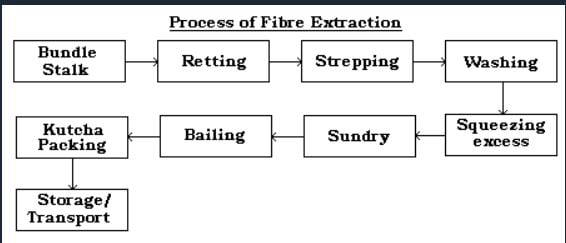IASbaba's Daily Current Affairs Analysis
Archives
(Prelims Focus)
Virtual Network Centre on Quantum Computing
Part of: Prelims and GS-III: Awareness in the fields of IT
Context: India and Finland will establish an Indo-Finnish Virtual Network Centre on Quantum Computing
- Will attempt to stimulate innovative research and development projects to address needs of both nations.
- The Indian side has identified three premier institutes, IIT-Madras, IISER-Pune and C-DAC-Pune for the same.
USA and China are taking lead in quantum computing. The need to invest in quantum computing researches is realized by India which has unveiled a programme called Quantum-Enabled Science & Technology (QuEST).
Quantum Computing
- A rapidly-emerging technology that harnesses the laws of quantum mechanics to solve problems too complex for classical computers.
- Quantum computing is a new type of computing that relies on quantum physics unlike traditional computing which is based on binary processing of information.
- It uses ‘qubit’ built by the way of some objects behave at the subatomic level or at extremely cold temperature.
- Exploiting the principles of quantum mechanics, quantum computing help computers to easily tackle computational problems that may be tough for the classical computer as the size of the numbers and number of inputs involved grows bigger. It uses the fundamental laws of quantum physics to perform an incomprehensible number of calculations simultaneously.
Potential applications of Quantum computing:
- Healthcare
- Research: Classical computers are limited in terms of the size and complexity of molecules they can simulate and compare (an essential process in early drug development). If we have an input of size N, N being the number of atoms in the researched molecules, the number of possible interactions between these atoms is exponential (each atom can interact with all the others).Quantum computers will allow much larger molecules to be simulated. At the same time, researchers will be able to model and simulate interactions between drugs and all 20,000+ proteins encoded in the human genome, leading to greater advancements in pharmacology.
- Diagnostics: Quantum technologies could be used to provide faster, more accurate diagnostics with a variety of applications. Boosting AI capabilities will improve machine learning – something that is already being used to aid pattern recognition. High-resolution MRI machines will provide greater levels of detail and also aid clinicians with screening for diseases.
- Treatment: Targeted treatments, such as radiotherapy, depend upon the ability to rapidly model and simulate complex scenarios to deliver the optimal treatment. Quantum computers would enable therapists to run more simulations in less time, helping to minimise radiation damage to healthy tissue.
- Finance
- Automated, high-frequency trading: One potential application for quantum technologies is algorithmic trading – the use of complex algorithms to automatically trigger share dealings based on a wide variety of market variables. The advantages, especially for high-volume transactions, are significant.
- Fraud detection: Like diagnostics in healthcare, fraud detection is reliant upon pattern recognition. Quantum computers could deliver a significant improvement in machine learning capabilities; dramatically reducing the time taken to train a neural network and improving the detection rate.
- Marketing
- Quantum computers will have the ability to aggregate and analyse huge volumes of consumer data, from a wide variety of sources.
- Big data analytics will allow commerce and government to precisely target individual consumers, or voters, with communications tailored to their preferences; helping to influence consumer spending and the outcome of elections.
- Meteorology
- With so many variables to consider, accurate weather forecasts are difficult to produce. Machine learning using quantum computers will result in improved pattern recognition, making it easier to predict extreme weather events and potentially saving thousands of lives a year.
- Climatologists will also be able to generate and analyse more detailed climate models; proving greater insight into climate change and how we can mitigate its negative impact.
- Logistics
- Improved data analysis and modelling will enable a wide range of industries to optimise workflows associated with transport, logistics and supply-chain management.
- The calculation and recalculation of optimal routes could impact on applications as diverse as traffic management, fleet operations, air traffic control, freight and distribution.
- Disaster Management
- Tsunamis, drought, earthquakes and floods may become more predictable with quantum applications.
- The collection of data regarding climate change can be streamlined in a better way through quantum technology. This in turn will have a profound impact on agriculture, food technology chains and the limiting of farmland wastage.
- Secure Communication
- China recently demonstrated secure quantum communication links between terrestrial stations and satellites.
- This area is significant to satellites, military and cyber security among others as it promises unimaginably fast computing and safe, unhackable satellite communication to its users.
Jute Mills of West Bengal
Part of: Prelims and GS III – Economy
Context: With over a dozen jute mills closed in West Bengal and thousands of workers out of job, the Indian Jute Mill Association (IJMA), an association of manufacturers, have approached the Centre seeking intervention so that prices of raw jute are revised and the mills resume operation. The crisis in the mills has caused a job loss for 60,000 workers.
Background
- The distress was caused by the Jute Commissioner’s Office, which imposed a “reasonable” price cap of Rs 6,500 per quintal of raw jute purchased in West Bengal.
- Stock to user [SUR] has fallen by 84% and jute yield is stagnant for five years.
- There is 70% shortage of credible seeds needed for robust cultivation.
- In November 2021, New Delhi made it mandatory to use jute bags to pack all foodgrains and 20 percent of sugar for the Jute Year 2021-22, ignoring the crisis that had been boiling in the jute industry. As a result, in November and December last year, the industry incurred a loss of Rs 1,500 crores. It failed to produce the 4.8 lakh bales of jute bags required by the government, due to the shortage of raw jute caused majorly by the Centre’s own decision. The jute bags were then replaced by a non-biodegradable, fossil fuel substitute: plastic bags.
- The central government has also alleged that farmers and traders are stocking raw jute to create a shortage of supply and increase the price of the fibre in the market. The Centre has, thus, made it mandatory to sell raw jute within 45 days of harvesting.
Jute
- Jute requires a warm and humid climate with temperature between 24° C to 37° C.
- Jute is largely grown in the delta shared by West Bengal and southwest Bangladesh, and in parts of Assam, Meghalaya and Tripura in the period between February/March and May/June, before the monsoon.
- West Bengal is considered the hub of India’s jute industry, valued around Rs 10,000 crore, and in 2016 the state housed 70 of the 93 mills in India. The long, soft, shiny bast fibre is used to produce bags, hessians, twines, ropes, mats and several other textile blends.
- Fully biodegradable and recyclable. A hectare of jute plants consumes about 15 tonnes of carbon dioxide and releases 11 tonnes of oxygen.
- Cultivating jute in crop rotations enriches the fertility of the soil for the next crop. Jute also does not generate toxic gases when burnt,
- Constant rain or water-logging is harmful.
- The new gray alluvial soil of good depth, receiving salt from annual floods, is best for jute.
- The jute plant’s fibres lie beneath the bark and surrounded the woody central part of the stem. To extract the fibres from the stem, the process is carried out in the following stages :

Jute and India
- Known as the golden fibre, jute was once the most important industry in India after cotton.
- By the 1910s, Calcutta Mills had become the world’s largest jute producer, employing more than 300,000 people.
- Bengal soon established a monopoly on the jute industry, after the golen fibre found military use in the Crimean War, and later the First World War.
- The jute industry in India received its first major blow when Bengal was divided into West Bengal and East Pakistan (now Bangladesh). After the partition, 75 percent of the jute-growing land went to East Pakistan, while all the mills remained in India, mostly in West Bengal
India’s Consumption of Semiconductors
Part of: Prelims and GS-III: Indian Economy & its challenges
Context:
- The government has received proposals from five companies for setting up the electronic chip and display manufacturing plants with an investment of ₹1.53 lakh crore under the Semicon India Programme.
- India will consume semiconductors of around $70-80 billion to manufacture electronics products worth $300 billion by 2026 as envisaged in the government’s vision document.
India Semiconductor Mission (ISM) has been setup to formulate and drive India’s long term strategies for developing semiconductors and display manufacturing facilities and semiconductor design ecosystem.
- Will enable a multi-fold growth of Indian semiconductor design industry by providing requisite support in the form of Electronic Design Automation (EDA) tools, foundry services and other suitable mechanisms for early-stage startups.
- It will also promote and facilitate indigenous Intellectual Property (IP) generation and encourage, enable and incentivize Transfer of Technologies (ToT).
- ISM will also enable collaborations and partnership programs with national and international agencies, industries and institutions for catalyzing collaborative research, commercialization and skill development.
Significance of the Sector
- Semiconductor chips are integral parts of the power train, chassis, safety systems, advanced driver assistance systems, and other parts of automobiles.
- They are used more in passenger vehicles compared to commercial vehicles or two-wheelers
- The move to electric vehicles has led to increased demand of chips. For example, a Ford Focus typically uses roughly 300 chips, whereas one of Ford’s new electric vehicles can have up to 3,000 chips
- With supply of semiconductor chips slowing down, the production in automobile sector is also adversely impacted.
Do You Know?
- It is estimated that the semiconductor industry is growing fast and can reach $1 trillion dollar in this decade.
- India can grow fast and reach $64 billion by 2026 from $27 billion today.
- Mobiles, wearables, IT and industrial components are the leading segments in the Indian semiconductor industry contributing around 80% of the revenues in 2021.
- The mobile and wearables segment is valued at $13.8 billion and is expected to reach $31.5 billion in 2026
(Mains Focus)
RIGHTS/ INTERNATIONAL
- GS-2: Human Rights
- GS-2: Effect of policies and politics of developed and developing countries
U.K.-Rwanda asylum plan
Context: Since 2018, there has been a marked rise in the number of refugees and asylum seekers that undertake dangerous crossings between Calais in France and Dover in England. This has caused immigration crisis for conservative UK government.
- The number of such persons rose from 297 in 2018, to 28,431 in 2021. Most such migrants and asylum seekers hail from war-torn countries like Sudan, Afghanistan, and Yemen, or developing countries like Iran and Iraq.
What is the UK-Rwanda Deal signed in April 2022?
- Under this deal, Rwanda will commit to taking in asylum seekers who arrive in the U.K. on or after January 1, 2022, using “illegally facilitated and unlawful cross border migration.”
- Rwanda will function as the holding centre where asylum applicants will wait while the Rwandan government makes decisions about their asylum and resettlement petitions in Rwanda.
- The rationale for the deal, according to the U.K., is to combat “people smugglers”, who often charge exorbitant prices from vulnerable migrants to put them on boats from France to England that often lead to mass drownings.
- Rwanda will, on its part, accommodate anyone who is not a minor and does not have a criminal record.
- A migrant in the U.K. will be given five days’ notice to pursue an appeals process, failing which they will be given a one-way ticket to Rwanda and will become the responsibility of the Rwandan government.
- The deal is “uncapped”, i.e., there is no upper limit to how many migrants will be sent to Rwanda for the five years that the deal will remain in place.
- The U.K. will pay Rwanda £120 million as part of an “economic transformation and integration fund” and will also bear the operational costs for each migrant.
- Currently, the U.K. pays £4.7 million per day to accommodate approximately 25,000 asylum seekers. At the end of 2021, this amounted to £430 million annually with a projected increase of £100 million in 2022
What are the criticisms of the deal?
- The Rwanda Deal is predicted to reduce the costs of UK by outsourcing the hosting of such migrants to a third country. However, opposition argue that the burden of such costs will eventually fall on the British taxpayer.
- The deal doesn’t outline the economic right to work, access to healthcare or any financial support provided by the Rwandan government to relocated persons.
- It remains unclear if the Rwanda Deal will solve the problem of unlawful crossings. Evidence from similar experiences indicates that such policies do not fully combat “people smuggling”.
- People who are already vulnerable when they attempted dangerous sea-crossings will become more exposed and vulnerable under detention.
- Rwanda doesn’t have remarkable human rights record. Government critics have been silenced or sentenced to prison. Further, Rwanda’s similar offshoring deal with Israel was scrapped in 2019.
- The Rwanda Deal is an instrument that will certainly generate revenue for the Rwandan government. It also transfers a British issue onto a less developed nation in order to pander to the anti-immigrant sentiments in the U.K.
Connecting the dots:
ECONOMY/ GOVERNANCE
- GS-3: Indian Economy & Challenges; Energy Security
- GS-2: Government policies and interventions for development in various sectors and issues arising out of their design and implementation.
India’s Power Crisis: An annual affair
Context: Despite high coal production, thermal power plants in India are suffering from shortages
Is India heading towards a power crisis? How bad is the situation?
- Several States across the country are expected to face coal shortages , a scenario that leads to power shortages in the coming weeks with India entering the peak power demand season from April to October.
- Also, the high global coal prices and below normal imports will further exacerbate the crisis.
- In fact, coal supply shortage is playing out at a time when power demand is rising and is expected to surpass the July 2021 peak power demand of over 200 gigawatts (GW).
- The daily peak power demand for Q4 FY22 averaged at 187 gigawatts (GW). During April 1-12, the average daily peak demand was more than 194 GW.
- Prices in spot markets are also at multi-year highs. The market clearing price (MCP) at the Indian Energy Exchange (IEX) in FY22 stood at around ₹4.4 per kilowatt hour (kWh), which is the highest in the last 10 years.
What is causing this crisis?
- Depleting coal supplies at thermal power plants, the mainstay of India’s power sector, has resulted in this crisis.
- Coal-based power generation, with a capacity of around 210 gigawatts (GW) of the total 396 GW, accounts for about 53 per cent of India’s total power capacity as on March 2022.
- Experts predict that depleted coal supplies at power plants will lead to power outages, a scenario that played out in September-October 2021.
- Due to high demand and interruption in coal supply (mainly due to heavy rains), the coal stock at power plants fell sharply leading to power outages in several States.
- With concerted efforts of the government, the stocks rose to levels which is sufficient for an average of 10 days at 85 per cent of the plant load factor (PLF).
How critical is the coal shortage?
- The situation at thermal power plants is deteriorating consistently and had reached critical levels.
- As per the National Power Portal, 11 imported coal-based (ICB) power plants had critical stocks, as on April 13.
- Similarly, 79 domestic coal-based power plants were facing critical stocks of the key commodity on the same day.
- Again, on April 13, of the total 173 coal-based power plants, the total stocks available were 23.17 million tonnes (MT) against a daily requirement of 2.76 MT. The stocks at this level will last for less than nine days.
What steps has the government taken to tackle this problem?
- To begin with, the government has issued revised coal stocking norms, which mandate the power plants to maintain sufficient stocks at all times; if necessary, through imports for blending to meet any contingent situation.
- Besides, an Inter-Ministerial Sub Group with senior officials from Ministries of Power, Coal, Railways, CEA, CIL and SCCL meet regularly to take various operational decisions to enhance supply of coal to thermal power plants
- Power Ministry has advised power plants to import about 36 MT coal for blending during 2022-23 with a view to build sufficient coal stock at Power Plants.
- The Ministry also has a Core Management Team (CMT) to ensure close monitoring of coal stocks at thermal power plants (TPPs) and operational decisions are being taken in CMT to augment supply of sufficient quantity of coal to the TPPs.
Why is this crisis recurring every year?
- Power plants in India having low supplies of coal is not a new phenomenon. The shortage occurs almost every year and the government, despite its various measures, has not succeeded in overcoming the problem.
- At the heart of the issue is the lack of planning and coordination between various ministries involved in the process — Power Ministry, Coal Ministry and Railways.
- While the Coal Ministry blames the Indian Railways for non-availability of adequate rakes, the Railways has pointed out the mismanagement in loading and unloading of rakes by the Coal India (CIL).
- Despite high coal production and despatch by CIL and other PSU miners, the supply at power plants has still not gone above 15 days in the last six months and lack of coordination and planning is to be blamed for this.
Connecting the dots:
- Indonesian Palm Oil Crisis
- 2021 Coal crisis
- Reforms in Coal Sector
- Commercial Coal Mining
(TEST YOUR KNOWLEDGE)
Model questions: (You can now post your answers in comment section)
Q.1) Quantum Computing has applications in which of the following?
- Drug Design & Development
- Logistics Optimisation
- Financial Modelling
Select the correct code:
- 1 and 2
- 2 and 3
- 1 and 3
- All of the above
Q.2) Consider the following statements
- The bulk of the manufactured jute goods is predominantly being used in packaging purposes in the domestic market.
- Andhra Pradesh is the largest producer of jute in India.
Select the correct code:
- 1 Only
- 2 Only
- Both 1 and 2
- Neither 1 nor 2
Q.3) Consider the following statements
- India is the world’s biggest smartphone manufacturer.
- India imports 100% of its semiconductors.
Select the correct code:
- 1 Only
- 2 Only
- Both 1 and 2
- Neither 1 nor 2
ANSWERS FOR 20TH APRIL 2022 – TEST YOUR KNOWLEDGE (TYK)
| 1 | d |
| 2 | a |
| 3 | d |
Must Read
On dispute between India and WHO regarding counting of COVID deaths:
On ease of doing business:
On right to repair:














